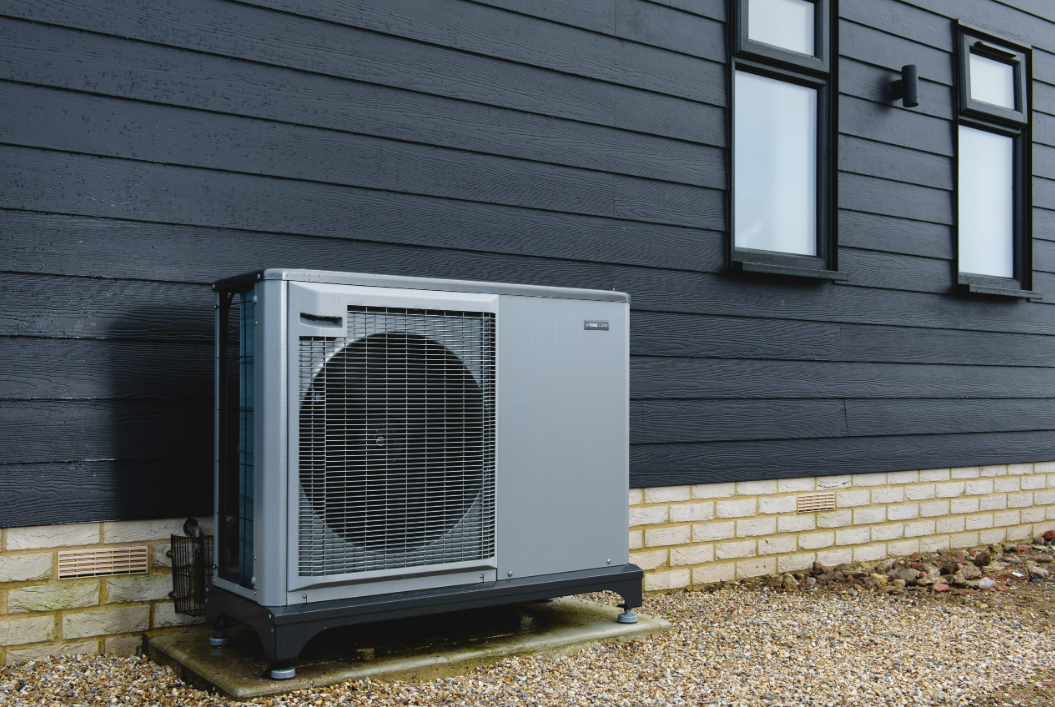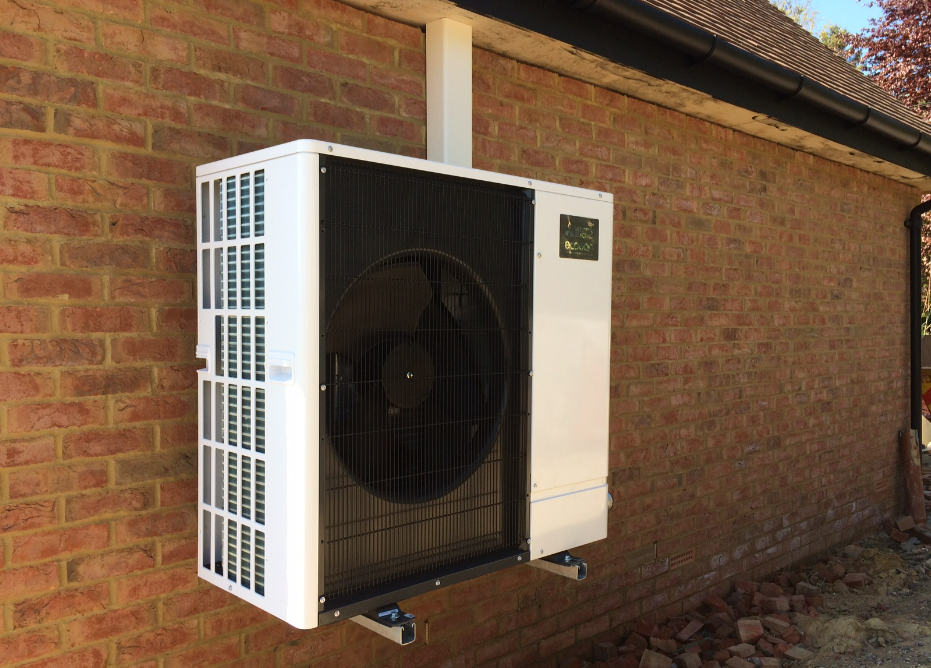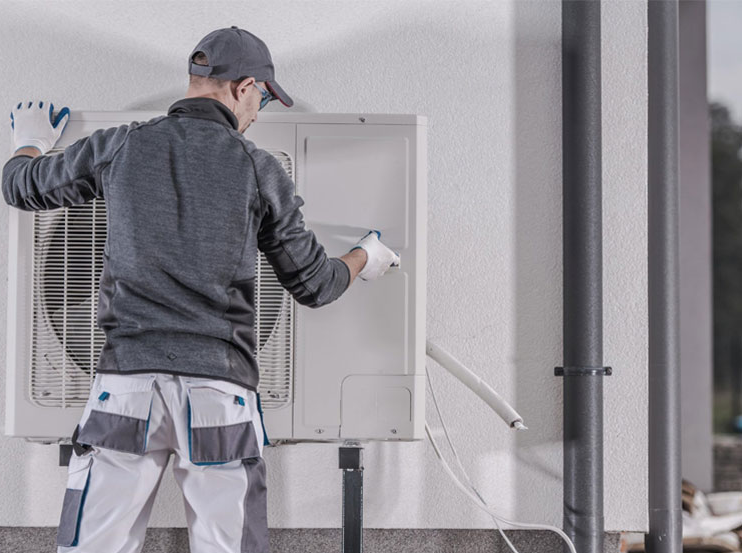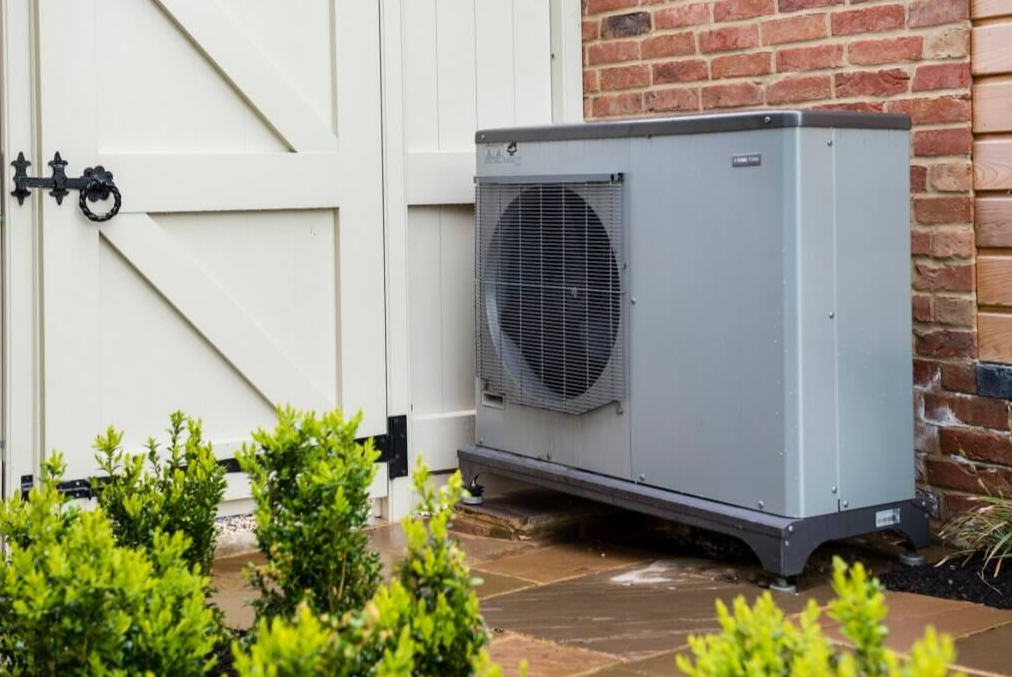How do air source heat pumps work?
An air source heat pump, also known as an air-to-water
source heat pump, transfers heat from the outside air to water, which is then
used to heat your rooms through radiators or underfloor heating. It may also
heat water that has been stored in a hot water cylinder for use with hot taps,
showers, and baths.
Air source heat pumps (ASHP) deliver heat at a much lower temperatures in
comparison to gas and oil boilers. So, you’ll need to run them for much longer
periods to heat your home to a comfortable temperature. They can also save you
more on your heating bills if you’re replacing an expensive system, such as electric
storage heaters. But remember – a well-insulated home is essential – otherwise
the heat the pump is generating escapes more easily.

How much does an air source heat pump cost?
An air source heat pump is expensive initially - roughly £10,000 - but like with any long-term investment in your house, to see results, you must spend money up front.
According to estimates we made using data from the Energy Saving Trust and the government, the average owner of an air source heat pump will reduce their emissions by 44 percent each year. In addition, you will also save £48 per year compared to gas boiler owners!
To fully utilise the capabilities of your new heat pump, you
may also need to install underfloor heating, improved
insulation, or new
radiators that are 2.5 times larger than standard radiators.

What are the advantages and disadvantages of an air source heat pump?
Air source heat pumps are low-maintenance systems that may supply heating and hot water, but they are not perfect. Here are some of the main benefits and drawbacks:
Pros
- Air source heat pumps are more energy efficient and emit less CO2 than many traditional heating systems.
- Heating costs may be reduced as compared to outdated systems.
- Installing a ground source heat pump is less intrusive, especially if you're retrofitting.
Cons
- You'll need sufficient outdoor space for the exterior condenser unit.
- Because electricity is required to power the pump, they are not zero-carbon (unless the electricity comes from a renewable source such as solar panels or a wind turbine).
- Condenser devices may be loud and blast colder
air into the surrounding region.

How do I install an air source heat pump?
Air source heat pump installation, like any other home improvement or addition, requires a few measures to guarantee that it is done correctly and safely. However, before beginning any installation, an examination of the property is required, as this will ensure that the ASHP offered is the most suited one for your needs. An engineer will be scheduled to visit and do a full evaluation, allowing the engineer to prepare a written report of recommendations and maybe provide you with an estimate of the possible savings.
Step 1: Installing indoor units
The interior unit for your air source heat pump will be installed first. If you want to have a ductless system installed, the contractor will find an unobstructed spot on the wall inside the zone to position the installation unit. The technician will install a mounting plate to support the indoor unit and fasten it to it.
Step 2: Creating an access point in a wall for connection
An access point must exist between the interior unit or air handler and the outside condenser. Your installer will drill a hole in the wall to pass piping and lines through. The access point will serve as an exit for the refrigerant lines, as well as an electrical line and a condensate drain line, which will convey water from the inside unit to the outside.
Step 3: Connecting the pipes to the indoor unit
After that, the refrigerant and condensate lines are then connected to the interior units. Refrigerant lines allow refrigerants to circulate between the inside and outdoor condensers. The lines will deliver warm or cold liquid to the interior units, which is subsequently pushed as air in the zone, depending on whether your air source heat pumps are heating or cooling now.
Step 4: Installing the outdoor unit
Your contractor will install the outdoor unit after the indoor unit is complete. Installers would often place a concrete slab on the ground to house the outside condenser in bigger (packaged or central systems). If it's a mini-split system or an air source heat pump with a smaller system, it'll most likely be put on the side of your house.
Step 5: Connecting wiring and electricity
Once the contractor installs the outdoor unit, they will then connect them using the refrigerant line and electrical cables. To protect the wiring from the weather, installers will either insulate these wires or run them via conduits on the side of your property. A drain line will also be put on the exterior of your property to divert moisture from the unit and away from the interior of your home.
Step 6: Finishing Touches
A few final touches are required to complete the installation of the system. One option is to fasten the pipes to the sides of your house. Another option is to add sensors; many air source heat pumps include sensor technology that allows them to convey the temperature in different zones to your thermostat. Many air source heat pumps also have wireless remotes for temperature adjustment, as well as the ability to monitor and alter settings through an internet connection on your computer, tablet, or phone.

Can I get an air source heat pump grant?
Through the Boiler Upgrade Scheme, the government is financing payments to encourage householders to adopt low-carbon heating equipment such as heat pumps. These incentives will assist householders in covering the initial costs of low-carbon heating solutions. Therefore, low-carbon systems built on or after April 1, 2022, will be eligible for this funding, if they fulfill the eligibility conditions. On May 23, 2022, the plan will be available for award applications and payments. The programme will run until 2025.
So, how much will these grants be worth? Most houses that participate in the initiative will get a £5,000 grant to assist with the purchase and installation of an air source heat pump. Those who own houses that require a ground source heat pump, on the other hand, will receive a £6,000 incentive as they are more expensive.
We hope this article has helped you in understanding how air source heat pumps work! If you have any further questions about air source heat pumps, you can visit your local friendly Howarth branch, or contact our customer services on the number 01472 907051.
Recent Posts
-
Garden Gate Buying Guide
Is your next project adding a garden gate to enhance, protect and secure your garden? Before you do
-
How to cut plasterboard
Whether you're a seasoned tradesperson or trying your hand at DIY, knowing how to cut plasterboard c

